SHAH ALAM: Even with the two Perdana Menteri class submarines, the RMN ASW capabilities remained limited with only the upcoming LCS having proper submarine hunting suites . With a limited SLEP for the Lekiu class and none for the Kedah class, RMN will be facing a future without much ASW capabilities.
The proposed funding for four MPAs in RMK11 might boost the maritime domain awareness (whatever that means!), a limited budget might forced the ASW suite off the planes.
It is for this reason I read with deep interest a Janes report (I will only post articles which relates to Malaysia) about UAE acquiring highly capable ASW vessels.
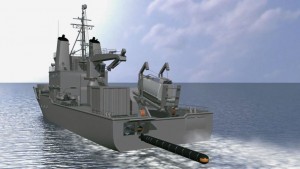
“The United Arab Emirates (UAE) is probably operating innocuous-looking vessels that are armed with the world’s longest-range torpedo: a capability that would enable it to target Iranian Kilo-class submarines at their base.
Confirmation that the UAE has received new torpedo systems came in the form of the defence export report that the German government released in June. It stated that two “floating platform[s] with torpedo-launching gear” had been exported to the UAE in 2014, along with underwater detection equipment.”
The vessels UAE acquired is the Rmah class, described by the Janes report as floating platforms. Based on information on the Internet this two support vessels are 58 metres long, about the same size of our current FACs. Since the RMN is looking to replace its FAC fleet, the ASW capability offered by these innocuous vessels certainly out-trump the Daewoo contender.
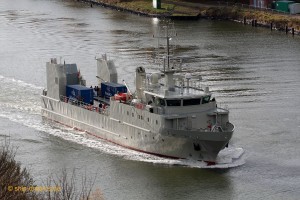
If the Janes report is correct, we could also get similar capabilities from such vessels. The same hull could also be adapted to a more versatile patrol boat armed with a 30mm gun in the A position while behind the bridge, VLS and SSM launchers could be installed. The stern launcher for the Seahake Mod4 ER torpedoes could be maintained. As it is there is no need for a dedicated stern launcher as the torpedo could also be launched from special containers.
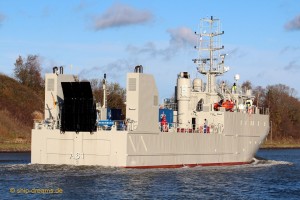
The two UAE vessels apparently have its smoke stacks at the stern but this could move forward for our vessel. I am no naval architect but I believe the front of the hull could be made longer to accommodate our much more unforgiving seas compared to the Persian Gulf.
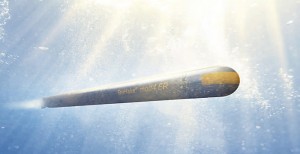
Anyhow there is no need for us to follow the UAE in building the same vessel, we could also get a 75 metre FAC, one fitted for specially to fire Seahake Mod4 ER torpedoes, from the stern or containers.
These torpedoes have a range of 140km, even better than most heavyweight torpedoes fired from submarines. Most lightweight torpedoes fired from surface warships ranges from 23km (low speed) and 10km (high speed).
These torpedoes are also a good replacement for the Blackshark heavy weight torpedo arming the Perdana Menteri class submarines.
We could still hope the Seahake has been selected for the LCS as the type of the torpedo has not been announced. However as Atlas Elektronik have not taken part in either LIMA or DSA exhibitions the chance of it being chosen for the LCS is rather low.
Of course there are many variables to a successful ASW operations, having a ship with a capable weapon system is just the start. But that is the least we can offer to our sailors.
— Malaysian Defence
If you like this post, buy me an espresso. Paypal Payment

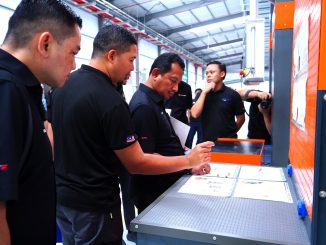
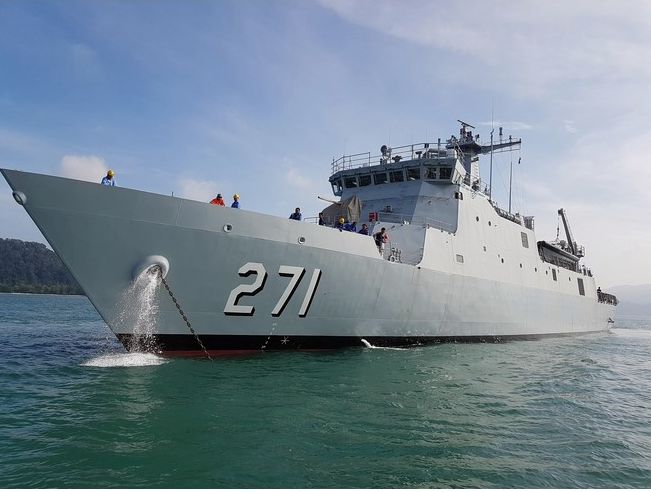
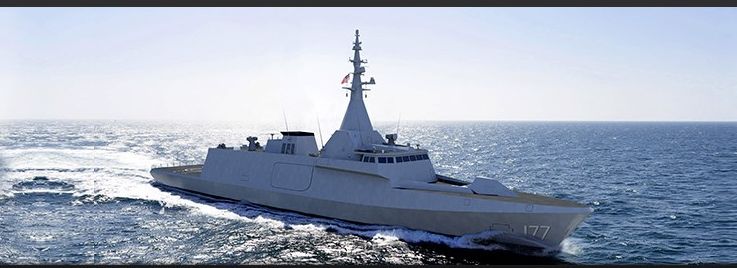
The UAE faces the same situation as we do, as in most of its waters are relatively shallow. In many parts of the Melaka Straits and even the fringes of the South China Sea, subs can often be spotted clearly from the air. It is common to see USN boats on the surface in the Melaka and Singapore Straits as the waters are too shallow to dive!
We have to bear in mind that not only do we lack ASW gear but that most ships are not fitted with torpedo decoys (a situation which admittedly applies to many other navies as well).
Most people are focused on missiles (being sexier) but in any future conflict a ship is probably likelier to be attacked by a torpedo or even a mine that costs RM100,000!
The problem with ASW is that it’s very cash and resource intensive; very expensive to learn and very expensive to maintain the skills. Once lost or eroded; the skills are hard to re-acquire; a situation many NATO navies learnt in the post Cold War period. With regards to ASW gear, one solution would be the STN Atlas modular ASW system that can retrofitted to almost any ship. Same thing goes with mine hunting gear.
There is next to zero chance of a future RMAF MPA being fitted with sonarbuoys, torpedoes and MAD as this would significantly drive up the overall cost of the programme. It will also be expensive to maintain the gear and to train the people to operate it.
The next few years will be interesting as navies will be using drones at bases to detect the presence of subs and divers. Which brings to mind, what happened to the underwater surveillance system. that was supposed to have been bought for Sepanggar?
Even as standalone systems the hull mounted sonars on the Lekiu and Kasturi are pretty decent. Together with the hull mounted and towed array sonar on the LCS and ASW configured helos (not yet ordered off course), the RMN will have a decent ASW capability for a navy it’s size and with its budget.
Reply
The Sepanggar USS tender remained under evaluation.
Its a blunder when the kedah class didnt get their SLEP. Just install a sonar system like thales bluewatcher + thales captas 1, they will be quite good. Then install torpedo tubes. Then adding anti-air system like the planned rim-116 or searam and anti-surface with kda nsm. The ships will become quite potent.
But then again its like wishing for a ‘durian runtuh’ in our current situation.
“..having a ship with a capable weapon system is just the start. But that is the least we can offer to our sailors”
Absolutely. Estimates put the number of subs in service with the navies in the Indo-Pacific at circa 120 boats. ASW capability should be the next step in RMN’s repertoire. I also think that they need to work closely with RMAF on ASW as it’s part of the Maritime domain. Also, in the era of austerity and jointery, I don’t see why RMAF MPA planes can’t be jointly run with RMN — think budgets — and partially crewed by trained RMN pilots/air crew.
Submarines are scary. They make sea denial achievable at relatively low cost. We can see that in the Falklands War. The action of a single sub (Conqueror) on an enemy cruiser (Belgrano) resulted in the Argentine navy, including its aircraft carrier (Skyhawks embarked) limiting itself to shallow waters, greatly reducing the threat to the UK Task Force.
It’s interesting that UAE Navy doesn’t operate subs at the moment but has acquired ASW capability. It’s difficult to get info on the Rmah-class ship but a website says the Atlas torpedo’s range has been tested up to 75nmi.
I don’t see any risk from enemy submarines. All the risk in Malaysia is presently internal and paradoxically from the apparatus of government. When you have the DPM going on about ‘dignity’, there is a huge problem.
Ferret,
The ideal situation would be for MPAs to the owned, flown and maintained by the RMAF but be under the operational control of the RMN. Off course the RMAF would then argue that the budget should come from the RMN.
@ marhalim
Look at the uae boat. No way at all it could be modified into a “FAC”. There is no way that kind of Hull shape could be anything but “Fast”.
Basically it is a hull based commercial oil and gas supply vessels. A slow ship fitted with equipment to listen to and destroy submarines (remember silent running diesel electric submarines does not sail underwater at speed)
A very interesting concept that could well be adapted to malaysia. It would be a good additional hull for normal eez patrols, “show of presence” missions in addition to its primary ASW mission. But to look at it as a “FAC”? I don’t think so.
Reply
You are right perhaps it’s better to call it a patrol boat.
Azlan,
Sure, that’s one way to look at it and it may well work fine.
My opinion is there are three, no, four ‘domains’ that should be joint: heli trg, development of amphibious forces, SF and maritime patrols, including fixed wing ASW. Maritime patrols (air and sea assets) are going to become more and more important in the years ahead.
From reading their in-house rag, the Joint HQ or the ‘Purple Force’ as they like to call themselves, seem to be a happy bunch so a joint ‘Maritime Command’ for example should work operations- and C2-wise. Detaching an RMAF sqn under command of RMN may pose problems — presence of air liaison officers not withstanding — not least of which is lack of understanding of technical issues, such as what the planes can and cannot do, maintenance, trg, and so on.
More than happy to hear your thoughts on this.
Ferret,
You raise good points. Perhaps also a ”Joint UAV Command” [assuming we ever get UAVs in decent numbers]?
Ideally, the sensor operators on the MAP would be RMN, with the RMAF only in charge of flying and maintaining the MPA. Overall control would be with the RMN but various issues have to be sorted out force, primarily with regards to operational expenses and stuff like that. The RSN/RSAF has a similar arrangement with their Fokkers. If the RMAF had it’s way it would happily hand over the MPA role to the RMN; just like how it has been wanting to hand over the troop/utility rotary role to the army.
In our context, doing what I’ve proposed it’s easier said than done as although ”jointness” has significantly improved, there’s still a lot of room for improvement [the same also goes for others] with regards to mindset, parochialism, turf guarding, etc.
Reply
We going backwards on joint-ness however. Empire building is more important….
Lots of such vessels were built during WWII, most well known being the Flower class. These were built in yards with small slipways and used simple triple expansion machinery rather than turbines.
The were relatively slow but that was not that much of an issue as the convoys they guarded were even slower.
High speed and subhunting are mutually exclusive. You really see this in the USN LCS which is pathetic in the role.
A more useful vessel is really a large cutter or sloop type vessel, shared with Maritim, built to commercial standards which can serve as depot ship to small craft and have a heli-deck for vertrep and running UAVs.
The Danish Standard Flex is a good idea but I just don’t see us being able to break free from the French influence.
The Knud Rasmussen OPV would be a good example. Base crew of only 18.
Gents,
Can’t agree more with regard to turf-guarding and empires. It’s the bane of organisations like the MAF everywhere. IIRC it got ugly and very public in the late 90’s.
Yes, you’re right Azlan that RMAF would prefer MPA to be run by RMN but RMN is small and MAF can’t afford duplication of effort; that’s why I suggested joint. ‘Operational control’ is the thorny issue here, but again, it’s something that can be solved thru having a joint HQ.
Joint UAV HQ? Well, that’s a thought, at least for UAV involved in maritime duties ie duties not related to a single service and those that are not special to arms, for example UAV for Recce Sqns, ships, etc.
There’s much to be said for jointness especially in optimal use of limited resources (read, money). But of course we’re talking about big things such as organisational and decision-making structures here and as always they need much further thought.
On a different but related note, UPP has been upgraded to a border protection agency according to Utusan. IIRC we had a ‘vigorous’ discussion about border protection right here at MD not so long ago. Excuse my vanity but I’d like to think that they got the idea from us .
Umm, there should be [big smile, wink, wink] after the last sentence. Shouldn’t have used angle brackets originally ;-]
Another bloody agency. Buang masa. PDRM is quite capable of managing the mission.
Reply
Empire building at its best, good for ordering assault rifles, assorted gear and stuff including vehicles…
Well, UPP is in essence a “joint” unit (a successful one too) under KDN, combining customs, imigresen and police personnels.
Upgrading it to an agency, will cause turf wars between this new agency with the police, imigresen, customs and border guard brigade. But it will create new positions for people to become “bosses” of this new agency…
Care to elaborate on “Empire building is more important…” statement?
“Basically it is a hull based commercial oil and gas supply vessels. A slow ship fitted with equipment to listen to and destroy submarines…” I agree. Add 1 crane onboard too.
I don’t think they will ever aquire this kind of boat, it mirrored the MMEA’s NGPB. Remember that our services likely to have their assets distinctive rather than standard over the board.
@ keberos
New agency will have new bosses, new bosses will have different set of “friends”. “friends” have opportunities to sell new stuff to the new agency that they cannot sell to existing agencies…
“jointness”? Out of the window.
Ideally a ship intended for littoral ASW would also be armed with rocket launchers, something like the RBU series or Saab’s Elma (both have a higher rate of fire than the 375mms that were on the Kasturi). Rockets would useful in circumstances where a sub has been detected at very close range, would complement the torpedoes and could also be used to force a target to surface.
Unlike torpedoes rockets don’t have a minimum range and is not dependent on a strong sonar contact. The Russians and Swedes are still strong believers of ASW rockets.
Depth charge rocket systems would be a good asset for asw in littoral areas. Indonesia’s 16 strong fleet of asw corvettes are equipped with the rbu rocket depth charges.
Reply
I have yet to find any Western companies selling depth charge rockets however. Saab used to have them, its no longer in their current portfolio.
Well, if you are looking for ASW rockets then if i am not wrong Roketsan from Turkey has just launched one sometime this year. It is 6 rounds ready launched.
Reply
Thank You. Indeed Rocketsan manufactured the 6-tube ASW launcher. The rockets looked very similar to the Hedgehog mortar, a late WWII mortar launched depth charges!
Israel has depth charge rocket but as torpedo counter measure. it can be use on subs. if u look at some of their litoral boat this is wut they use and not torpedo. maybe better for litoral situation?
Air dropped depth charges would make sense, especially against a target detected in very shallow waters or in circumstances where it might be a bit tricky to deploy a torpedo. Then again, are any companies still selling then and is anyone still using them?
Also, an MPA with depth charges would at minimum need MAD and if it has MAD then might as well also have torpedoes and sonar buoys; again cost issue. P-3s, Nimrods and II-3s use to have depth charges; not sure if the P-3s (which also use to have nuclear depth charges) and II-1s still have them.
The TNI’s Parchims have received minor upgrades, such as new radios and a gearbox (from the same company who supplied the ones on the PT-91s – Renk). Not sure if the sonars are still operable or have been replaced.
Reply
Based on my Google search the UK seemed to have air dropped depth charges mostly from helicopters including the Wildcat and Merlin. Cannot find the manufacturer, though, most probably its such a small market that they dont market it extensively.
In NATO service ASW launchers have practically disappeared. The Fins and the Swedes however are still firm believers. In Soviet/Russian use, the RBU series was fitted not only only ships intended for coastal work (Petya, Grisha, etc) but also on larger ocean going vessels (Kirov, Krivak, Kashin, etc) which had/have RBUs to complement wire guided torps for deep water ASW operations and also for self defence. Not sure how how true this is but I’ve been told that the RBU series is also intended to be fired in the path of incoming torps.
RN Sea Kings also had depth charges but I’ve never actually seen any pics of helos carrying depth charges.
Ship mounted ASW rockets launchers are useful but the problem is that if a ship is within range to use it, the target is also within range to send a torpedo headed the ship’s way! Ideally, targets will be persecuted well away from the ship by airborne assets but in the real world anything can happen. Sure, modern torpedoes have decent ranges but it depends on how strong the contact is and torpedoes fired from a distance provides target with more warning and time to take evasive action.
At the end of the day, ASW is a skill that requires a lot of cash to acquire and maintain. It is also resource intensive (like raising and training jump capable units) and hard to justify (like EW) in times of peace.
Short range kills might be possible if the the asw ship is not the main target of the submarine (usually they will focus on the most valuable target possible), or the submarines main mission is to remain undetected.
If the sub kill the asw patrol boat 1st, its a clear sign that there is a sub in the location and other assets would surely focus on finding the sub.
So there is a merit in putting asw equipment on a low value ship, as it won’t be a main target of a submarine…
“usually they will focus on the most valuable target possible”
Yes, if there’s a fight they’ll probably focus on capital ships, transports, oilers. If they don’t already know, they’ll probably assume every grey ship is ASW capable.
Interesting that in the Falklands, Adm Woodward, a submariner and task force cdr, listed his defence priorities as air defence first followed by ASuW and then ASW, although they spent a lot of time hunting the diesel boat ‘San Luis’ that loitered in the area for more than 30 days and managed to get hits. But the hits were ineffectual because of technical problems. The Brits had 3 SSN there but couldn’t patrol the Falklands littoral.
The ASW rockets were probably superceded by homing LWT, which can sink a sub, in Nato, anyway. IIRC both Hang Tuah and Rahmat have/had ASW mortars.
A single argentinian diesel sub diverted a lot of resources of the British fleet. Those 3 British ssn’s also forced the argentinian capital ships to remain in their harbours. That is how submarines could give a major impact in a naval maneuver.
Right now the south china sea is roamed by the 6 vietnamese kilo’s, not to mention the Chinese sub fleet. 6 asw gowind frigates with the latest sub hunting gears is a capable answer to those subs, as is our 2 scorpenes. But we still need to support those assets with asw capable helicopters (is our lynx equipped with dipping sonars?) and asw capable maritime patrol aircrafts (the turkish version of the cn-235mpa comes to mind)
Reply
No the Lynxs are not fitted with dipping sonar. That is why they are buying the 6 ASW helicopters.
Ferret,
Yes the LIMBO. If I’m not mistaken there’s one in the RMN museum in Melaka. In the 1980’s there was one in an open display area in MINDEF.
Despite the presence of Argentine subs the main worry was still the air threat. The RN was convinced it could manage the sub threat but was very worried about the air threat, including the possibility of the Argentine carrier coming into range and the Argentines getting more Exocets for their Etendards. E
Very few Lynx and Super Lynx operators went for dipping sonars. Cabin space is one issue, the other is adequate power supply.
Our future MPAs are unlikely to be fitted with ASW gear as this would significantly drive up the overall cost of the programme. Also, acquiring the hardware is the easy part. The not so easy part is acquiring and maintaining the skills : very costly and resource intensive. A navy our size and with its resources cannot realistically acquire tertiary ASW skills. If it did, it would be at the expense of other areas.
Any sub with a sonar and torpedoes can detect, track and engage another sub but for various reasons, most SSKs do not make sub hunting a core role. The main roles of our 2 boats in time of conflict would be sea denial, special forces insertion, surveillance, etc. Sure our Scorpenes provide the fleet with an excellent means of ASW training but whether they are useful in hunting subs is a different matter.
The Falklands was a sharp reminder as to the need for a strong ASW capability and the flexibility subs offer. Other examples include the sinking of INS Kukhri and East Timor. The detection of a TNI Type 209 by an RNZN Leander, at a time when the INTERFET fleet was very near East Timor, was a major cause of concern.
If im not mistaken the scorpenes did a few sub vs sub training with French navy during trials in europe, and they did good.
The Kasturis also used to have 375mm Bofors ASW rockets / mortars before the refit.
RNZN Leander?
Azlan,
“RBU series or Saab’s Elma (both have a higher rate of fire than the 375mms that were on the Kasturi)”
You can’t be serious.
“Unlike torpedoes rockets don’t have a minimum range and is not dependent on a strong sonar contact. The Russians and Swedes are still strong believers of ASW rockets.”
You can’t be serious.
“Ship mounted ASW rockets launchers are useful but the problem is that if a ship is within range to use it, the target is also within range to send a torpedo headed the ship’s way!”
FYI, It has became a cheap torpedo countermeasure instead for hunting for quite sometime. The system went out of fashion because those that are serious in ASW have upgraded to ASW missiles and decoys. Which are far more effective.
Ferret,
If the coming MPAs are the real deal instead of those wannabe MSA we have right now, then it should be run by RMN themselves. The skill set for each of the service are totally different. Most important is, what supposed to be an regular interaction becomes an inter service mess. Plus as cadet training and maintenance being unify under one controlled group of civil contractors, it makes little sense to practice “put anything that flies under AF”. Navy is small today because it does not have that asset. It should have what it takes to operate the new capability.
……,
They did. With a French team on board.
One major advantage SSNs have when it comes to sub hunting [as well as other areas] is that the CO does not always have to keep his eye on battery levels [in case the boat has to sprint and drift for a period or to maintain high speed to avoid torpedoes] and he does not not have to switch off the A/C or displays to conserve power.
AM,
It was a sigh to see when firing but the residue would blacken the deck and other areas.
shed,
A Leander class/design frigate belonging to the RNZN.
Azlan
Ohhh.. u mean the HMNZS Canterbury… Damn good ship. The indonesian are still doing well with their Ahmad Yanis i supposed.
Marhalim,
When I saw the title I thought so and so, but suprise surprise. First time in modern times I get to know of an ‘innocent and deceptive looking vessel’ that has the ability to launch the real McCoy 21″ full size torpedo capable of sinking the largest ships.
Maybe we should get some 20 of these and station 10 of them near the Spratly’s.
H,
I agree that getting a joint force is going to be difficult, mainly because of inter-service rivalry. Naturally each service is going to defend its turf either by resisting retrenchment of assets or by resisting tasks not seen as within its ambit. I’m no expert but Organisational Theory understands this albeit gives it different names: organisational silos, territorial behaviour, territorial games. It’s not only us but armed forces around the world. A few decades ago Canada’s armed forces were unified and divided into Land, Air and Maritime Commands where 2 and a half ringers wore green and were called majors. There was resistance at first and very senior heads rolled but it has lasted til now although names and unforms have reverted to the old style.
We don’t have to go that far but nonetheless, by its very definition, ‘maritime’ implies both sea and air; it’s everybody’s business, even TD, whose troops may be on sea transports. Our maritime area is nearly double the land area. I know manpower size is not a very good measure, but the RMN is only about a third the size of TD. I would love to see RMN get a proper aviation arm (and a proper submarine flotilla) but we have to be pragmatic. To build up a force sufficient to protect those areas would require another AF just for the Navy. We don’t have the money so we’ve to somehow share. Also, it’ls easier to get things if they speak on common needs in one voice. For eg, RMN mentions MPA and RMAF says aye; TD mentions LLAD and both RMAF and RMN say yes. RMAF mentions enhanced force protection and both TD and RMN agree.
The Services have always worked with each other before. I think because of costs, the days where each Service runs everything on its own are over. Even the RAF plan to embark their F-35 on the new carrier. Mindef will just need to knock some heads.
All navies keep ships in service well past their usefulness. Just because a Leander is in service, upgraded even, does not mean the user is “happy” with it.
Ferret,
What’s your personal definition of a “proper aviation arm and submarine flotilla”?
Zainal,
One can argue that we really should be focusing on the mine threat. Sure, there are dozens of foreign subs but there are thousands of miles, which are just as hard to detect, cheaper to buy, cheaper to maintain and some of which now include new technology that makes them “smart” and harder to detect.
As I mentioned before. Getting the hardware for ASW us the easy partner the not so easy part is gaining the tertiary skills needed and to maintain it.
H,
“For your information”, certain navies still rely on rocket launchers for ASW as they believe that having rockets supplement torpedoes and that rockets, in certain circumstances, are very effective and even more so than torpedoes. It hasn’t totally “gone out of fashion” as you claim …..
Yes I’m very serious…… Are you?
P.S. I never said that torpedoes were better than rockets or vice versa; I clearly stated that both have their merits. Granted, torpedoes have largely replaced rockets and offer much more flexibility but the key facts remain : a handful of navies still use ASW rockets and these navies are quite, as you put it, ‘serious”.
I also still maintain that an ideal situation would be for air assets to engage contacts at a distance as a ship in range to use its torpedoes is also in range to be fired upon by a torpedo.
Philosophy is different. The Swedes mount theirs on small vessels as the only ASW weapon. Large Russian ships with torpedos and ASROC carry these rockets as a kind of CIWS.
It should be remembered that most of the Russian fleet is above 25 years old. Should wait and see if the upcoming generation of frigates and destroyers carry RBU rockets or not.
@ AM
The Indian Navy Shivalik Class and the new Kamorta Class are equipped with RBU rockets.
AM,
Like I mentioned previously : there will be circumstances when having rockets will be useful and circumstances where the rockets would an ideal complement to torpedoes. The rockets are not only used as a CIWS – if that was the case ships armed with the RBU series would not have torpedoes decoys. In instances where a sub has been detected at close range and there is a strong contact, rockets would be useful. Rockets would also useful as a warning signal or to force a contact to surface.
Again, I’m not saying we should rely totally on rockets or that torpedoes do not make better sub killers and offer more flexibility. What I’m saying is that despite largely being replaced; rockets still have a role to play and that certain navies still use them because they see a clear need for them.
P.S. The Stockholm and Gotoberg class have both torpedoes and rockets.
Forgot that the Indian Navy new Kolkata Class Destroyer also equipped with RBU rockets.
Azlan,
” What’s your personal definition of a “proper aviation arm and submarine flotilla?”
A couple of sqns of carrier-based fighters? No, just kidding.
It’s quite modest actually: present (+ acquitions in pipeline) + flt of medium lift helis, and about six subs…
and a sqn of MPA with ASW, at least until they decide who owns the sky in the maritime domain — RMAF, RMN, or both.
Just a wild thought, the primary “hostile” subs RMN faced will most likely belong to PRC, and/or fellow ASEANs (USN, perhaps?), so even if detected, will the government authorized a kill? Adequate MPA for surveillance and situational awareness makes sense but high-end, offense-oriented ASW platforms just do not seem to be of pressing importance, especially under current financial stress…
ASW patrol boat?
Better a MPA with ASW capability
Reply
ASW patrol boat is much better, longer endurance cheaper to operate etc. Yes I agree its less sexy than an MPA
Romeo,
There is no ‘better”….
In an ideal world we would have ships, helos, fix wing aircraft and underwater sensors configured for ASW as all these assets would complement each other. We would also have drones in our bases to detect the presence of subs and divers.
In the real world we can’t afford ASW configured MPAs as it would cost a bomb to acquire the hardware, maintain it and gain the tertiary skill sets needed to put the hardware to good use. Also, does the threat environment justify such spending, given that there are other areas that require attention.
All this stuff about the “threat” posed by subs. What about mines? There are hundreds of not thousands stockpiled by various regional countries (including us). They are easy to deploy (even with a 30 foot trawler), cheap to buy, require minimal maintenance, minimal training and are hard to detect. Newer mines coming in the market are also getting smarter and harder to detect.
@ azlan
You don’t mine the sea in peacetime.
But subs could roam in our eez even right now, stalking our ships, doing surveillance on naval installations, infiltrate and extract special forces and spies into our country. That is the difference in threat priority between those two.
A foreign sub in malaysian eez (which in international law they are entitled to do, just not into territorial waters) should be made to know that they are being tracked by tldm, by active sonar pings from asw ships or helicopters, or by obviously following and tailing them (which the sub could see with their own sonars).
…
Good points.
Yes, Azlan, ASW is expensive; I grant that. Then again, Air Defence is expensive but nobody is suggesting we’ll just use SAM for QRA.
Clearly we need to see the big picture. It’s not for nothing that the TPTL said in an interview that in terms of capability, with the Scorpenes, we’ve entered the ‘Premier League’. But the threat posed by subs is not just on material, but also on morale.
In the Falklands for instance — I keep repeating it but it’s the only modern battle with both sides fielding subs, big-wig naval historians/straregists are still discussing it — assets were redeployed repeatedly, even from firefighting and rescue duties (eg Sheffield), to investigate a contact because the commander was worried that the contact could be a sub and not an artifact. The operative word here is ‘worried’.
Use of MPA for ASW has always been contentious chiefly because it is expensive and least likely to be needed in a benign operating environment; there are other tools in the ASW toolbox that are already in being and can be used more cheaply. But nobody is willing to say that MPA-ASW is redundant simply because of the, erm, platform’s speed and reach.
From the point of view of ASW capability MPA-ASW completes the picture in our case. The skills required are hard to acquire and needs constant sharpening. In other words, it’s difficult to scale up ASW quickly unlike, say, those required for surface warfare if the needs arises.
There is a school of thought that argues — because of improvements in missile technology, re China’s ballistic antiship missile programme for instance, making surface combatants very vulnerable — that the maritime force should essentially consist of a preponderence of submarines and planes. That is food for thought.
……,
And rarely do you employ various kinds of assets to hunt a sub in peacetime. Like subs, mines can create trouble far out of proportion than their actual numbers. If a presence of a sub in a choke point can cause havoc, so can a few mines placed in a choke point or off a port. Another point I’m trying to make is that we can’t focus too much on one area, irrespective of how much concern is causes – if we did it would be at the expense of other areas.
For every argument made that we should invest in ASW, valid arguments can also be made as to why we have to invest in anti mine capabilities… Valid arguments can also be made that we should focus on air defence defence. It doesn’t end.
With regards to subs the point I’m making is that subs aren’t the only danger faced during times of war. There are other, cheaper and easier means for people to cause us harm : mines. And not only in times of war but also in times of tension.
Ferret,
Having an integrated AD network and having tertiary ASW skills are 2 different things requiring different levels of investment and training.
ASW is certainly not redundant a d us a skill we need. Having said that, we can debate all we want but the key facts remains that we already have a decent ASW capability for a navy our size and budget. We simply do not have the resources to significantly do more than what we’re doing or to acquire more than the 6 LCS (with a hull mounted and towed array sonar) and the 6 ASW configured helos that the RMN has made a priority.
P.S. The good news for us is that – with the exception of parts of the South China Sea – our waters are relatively shallow. I know for a fact that in many parts of our waters, subs can be spotted from the air. Yes, subs operating in a littoral environment have lots of advantages but the hunter also has certain advantages. Especially when operating in home waters that have constantly been mapped/surveyed and in waters ship/boat commanders are familiar with.
Technology is advancing so rapidly that ASW as we know it will look very different in the next decade. Plans are already in place to use drones not just to detect subs and bases but also to be deployed from subs to detect other subs. For more than a decade the USN has also been looking at lasers for sub detection.
Mine warfare is also undergoing major changes driven by advances in technology. The RMN and most navies still rely on the traditional wire sweep (which hasn’t changed much since WW1), in conjunction with sonar and ROVs but the premiere mine warfare specialist, the RN, has totally done away with the wire sweep and is now relying on robotics. If what so far has appeared on open source material is true, the Chinese have in their inventory very “smart” mines; using some of the technology originally made for smart phones.
“Smart phone technology”? Mines with noise recognition that identifies targets by thier noise signatures ..
Mofaz,
Yes. Maybe a bottom laid mine that is programmed to only detonate once it detects a particular acoustic signature. Then again I would have thought that such mines are already available. There are already mines enclosed in certain types of casings that are hard for sonars to detect.
From what we know from open source material we currently have 2 types of Italian mines. Certain classes of ships operated by the RMN have the rails needed for mine laying.
The Indonesians still have quantities of mines acquired from the former Eastern bloc. The beauty of mines is that they last for decades and require minimal looking after. Thailand has 2 types of locally produced anti-submarine mines.
Hyundai recently confirmed that they are building a hds-400, 400tonne submarine for an undisclosed customer.
Tried to find more information about this sub but very little open source info about it (dimensions, capability, price etc). Looks like an ideal submarine for shallow littoral waters.
Cosmos had previously tried to sell mini subs to the RMN. My guess is that the mini sub being built by Hyndai is for Vietnam but off course I’m just guessing here.
Azlan,
If you are serious…ly having difficulty in understanding physics… Just do some horizontal speed comparison…
Our Gowind LCS already select J+s light tropedo launcher, so mostly will select MU90, so can share use with ASW helicopter.
majority of navy ship only install light torpedo.
TAS sonar only can detect submarine max around 40+km.
navy ship mostly depend on ASW Helicopter to detect/fire torpedo at far distance.